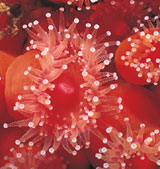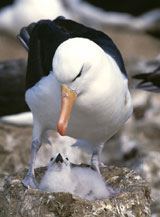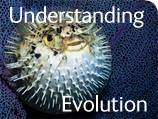Living evidence
Video presented by Jo Cooper


While anemones can reproduce sexually, most of the time they reproduce asexually by dividing themselves in half when they get large in size. Organisms that clone themselves in this way tend to evolve slowly
While the process of natural selection that drives evolution is happening every hour of every day, evolution of a species frequently works at a very slow pace and is usually only seen through evidence in the fossil record. However, careful analysis of the natural world reveals evolution can and sometimes does move at an astounding rate.
The rate at which evolution happens is related to the way in which a species (a specific group of organisms) reproduces. If the organisms in the species reproduce by cloning themselves (asexual reproduction) the rate of evolution will tend to be quite slow. However, if the organisms in the species reproduce by mixing together the genes of different individuals (sexual reproduction) the rate of evolution will tend to be much faster.

The black-browned Albatross frequently lives to be over thirty. It only lays one egg a year and chicks take up to nine years to mature. They are a classic example of a species that evolves slowly.
The rate at which a creature reproduces also plays a significant role in the rate of evolution for the species. If the creature reproduces slowly, it will tend to evolve slowly. If it reproduces quickly, it will tend to evolve quickly.
The organisms that evolve quickly tend to be insects and micro-organisms that breed very quickly.
One example of evolution in recent history is that of the apple maggot in North America. Apple maggots, as their name suggests, eat apples, but this has not always been true. They used to feed on a plant called hawthorn (and were called hawthorn maggots), but in the 1700s when apples were introduced to North America some hawthorn maggots started to feed on apples.

Nearly identical as adult flies, the apple maggot evolved from hawthorn maggots when apple trees were introduced to North America.
This shift in diet separated the maggots into two groups, hawthorn maggots and apple maggots. Both groups are still biologically very similar, but because of their food preferences they will no longer breed with one another.
- Presented by: Jo Cooper
- Date: 27 April 2005
- Duration: 3:32
Got a question or a comment about this video?
To watch video, you'll need to have Windows Media Player or QuickTime installed on your computer.

